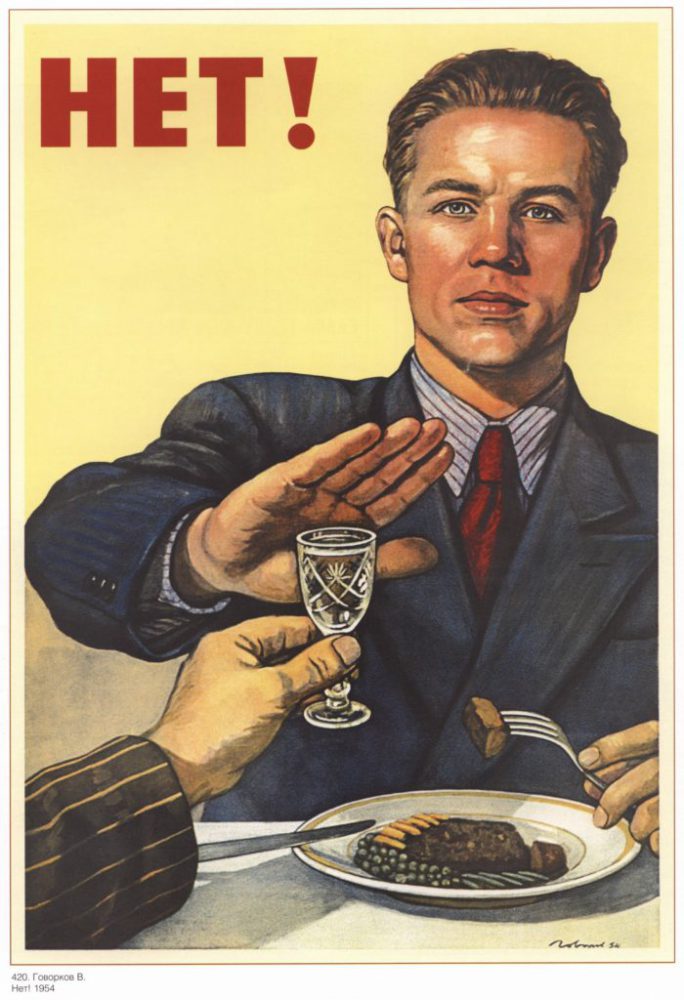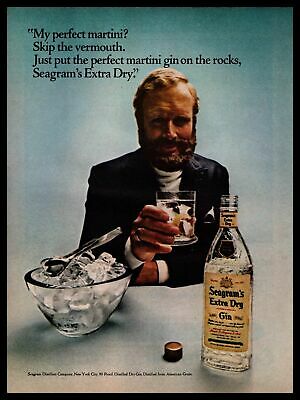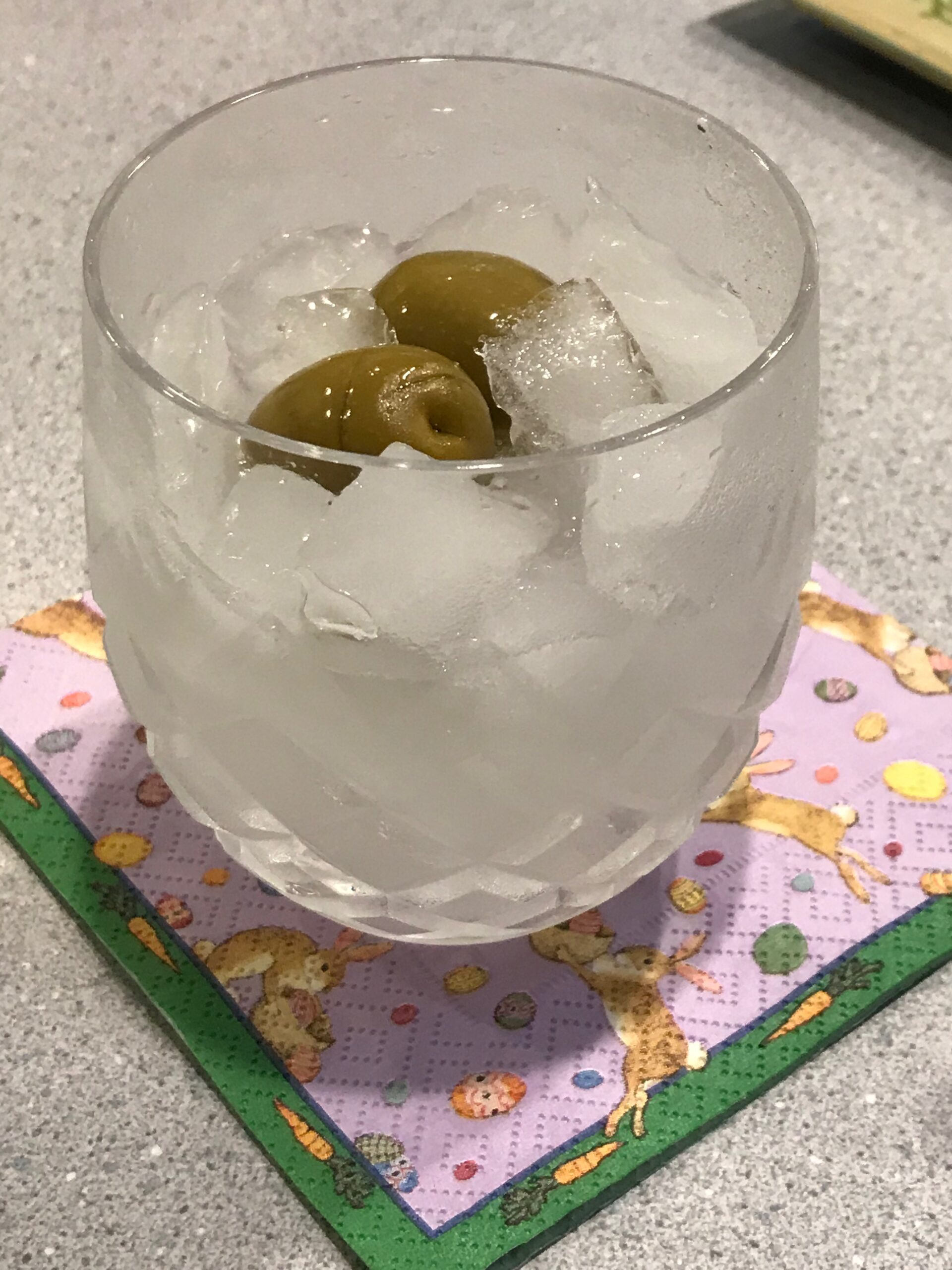Crisp Suits, Controversial Martinis, New Music
Reading Time: 6 minutes.
Suits, and disputed martinis, and criminal music.
Dress
When it comes to suits, White Collar Wire is the last holdout. (In the 1990s, one would have said “Last of the Mohicans,” though I have always lacked Daniel Day-Lewis’s hair). But there remains something about a good suit that carries not so much faux-Eighties power as a clean confidence. Consider this article from The Rake: Sixty Years of Bond’s Best Suits. As the author notes: “Sixty years on, each incarnation of 007 has brought with them a tailoring approach that matches the cut and trends of the era, while remaining quintessentially British in their refinement.” At a minimum, even if your pandemic-driven Sansabelt sensibility argues otherwise, follow Sid Mashburn’s thoughts about style:
Style rules…it sounds funny, but I don’t have a ton of them. I guess it helps that I wear a uniform—a jacket and tie—because it actually minimizes your decisions in the morning. The tie is my hardest decision of the day! But ultimately, dressing is about good manners, so rule one is to make an effort for those around you. I can attest that having a store you like, with great products and a great tailor, helps with that. Beyond that, I’ve always endorsed the motto “I am too poor to buy cheap.” I love thinking about the cost per wear, and factoring in the enjoyment you’ll get out of it. So I have always tried to buy the best quality I could afford.
Christopher Fenimore, “Five Fits With: Menswear Legend Sid Mashburn,” in Esquire (January 21, 2022).
He is not James Bond, but even Keanu Reeves wears a blue suit.
Drinks
In a sentiment that one hopes remains a minority view, Punch claims that It’s No Longer Cool to Hate the Vodka Martini:
The serve in question is the vodka Martini, what purists have long argued is an abomination and a fraud. Only iterations built on the traditional base of gin, the argument goes, are real Martinis. But as the Martini has yet again become ubiquitous, the dogma imposed by the first and second waves of the cocktail revival appears to be loosening. At esteemed drinking establishments spanning the country, aperitivo bars and speakeasies alike, vodka Martinis are back on the menu. In some cases, you’ll find bar staff offering vodka as an option, rather than a bartender having to reluctantly oblige; in others, you’ll see vodka Martinis, full stop, and without irony. Though the age of the vodka Martini is likely not nigh, the end of the gin Martini’s tyranny might be.
Crucial to grasping the significance of the vodka Martini’s resurgence is understanding how the drink came to be ostracized in the first place. In the mid-2000s, following decades of candy-flavored vodka cocktails, the United States had become a “vodka nation,” says Julie Reiner, the pioneering New York bartender behind Clover Club, Leyenda and the forthcoming Milady’s. “Many people refused to try anything other than a dirty vodka Martini or a vodka and soda or a vodka drink.”
Desperate to reinject sophistication into the cocktail landscape and mix drinks with anything other than vodka, craft cocktail bartenders began to take hard-line stances against the most popular distilled spirit in the country. The most vocal lambasted it as boring and passé, a leprous drink to be definitively cast out and shunned. “I don’t carry vodka or light beer because they teach morons to like things that have no taste,” one career bartender told the New York Post in 2013.
But in recent days, bartenders have begun to turn to vodka as a worthy Martini base, especially in savory iterations. As Martinis turn dirtier and dirtier, vodka is arguably the more appropriate base, considering its inherent neutrality in flavor, scent and appearance. “Personally, I still prefer my classic Martini with gin, but if we’re going the dirty route, then I’d rather leave out the juniper berries,” says Nick Akira Amano-Dolan, beverage director of Bon Vivants Hospitality, the group behind San Francisco’s Trick Dog and Chezchez. Samantha Casuga, head bartender at New York’s Temple Bar, shares the sentiment: “I would rather have a dirty vodka Martini than a dirty gin Martini, because I don’t actually want that much conflicting flavor,” she says. Reiner feels similarly, though she puts it more authoritatively: “A dirty Martini should be made with vodka.” Among the offerings at Clover Club is the Dirty Sue #2, a dirty vodka Martini riff featuring dry Spanish vermut, manzanilla sherry and caper brine.
Set aside the “dirty” problem—why not put olives in a convenient bowl, and nibble them while you sip your martini? Or, as Bernard DeVoto noted in The Hour: A Cocktail Manifesto: “Nothing can be done with people who put olives in martinis, presumably because in some desolate childhood hour someone refused them a dill pickle and so they go through life lusting for the taste of brine.” The larger problem is that vodka, by definition, is a neutral spirit without taste, upsold Everclear no matter how artisan the label. Powerful, but tasteless—think University of Miami football in the early 1990s.
And, as long we touch on controversies, consider the Martini-on-the-rocks, a preparation popular from the 1950s through the 1970s, and making a comeback, as noted by Robert Simonson in an (old) article in Punch:
“I would say 40 to 50 percent of the time, [customers] ask for Martinis on the rocks,” said Mike Holmes, the beverage director at the Wickman House in Ellison Bay, Wisconsin, which boasts one of the best cocktail lists in the state. “Usually an older crowd enjoys them that way.”
Indeed, the Martini/Manhattan on the rocks is a generational thing, a habit picked up by those America who came of age in the years following World War II. Adam Platt, restaurant critic at New York magazine, told me that, while his grandfather took his Martinis straight up, with a good amount of vermouth, his father preferred them dry and with “plenty of ice.”
I have experienced that generational divide in my own family. I grew up watching my father assemble his nightly Martini in a rocks glass: ice, a good dose of gin, a small splash of dry vermouth and a fat olive or two. To my eyes, it seemed the most slipshod cocktail imaginable. (I wasn’t of drinking age yet, but I knew from old movies that a Martini should look a lot classier than that.)
My father made no excuses. It was the drink he grew up with. “I vaguely remember making Martinis in a mixing glass, but it was so seldom,” he recalled. “I really started drinking them when I was going to college [in the early 1950s]. At that point, everyone was drinking them on the rocks.”
Recipes for Martinis varied during the first few decades of the drink’s existence, from the 1880s on. Some contained Old Tom gin, some went for sweet vermouth, while later formulas veered closer to the London Dry gin and dry vermouth mix we recognize today. But they all shared one thing: They were strained and served up, in a cocktail glass.
The Martini on the rocks began to nudge itself onto bar menus in the early 1950s. “Most popular cocktail seems to be a Martini-on-the-rocks,” wrote Bert Bacharach in “Stag Lines,” a syndicated column aimed at male readers, in March, 1953.
Read the entire article: Can the Martini-on-the-Rocks Make a Comeback?
Devoted as White Collar Wire is to empirical observation and science-based rigor, I fixed a martini-on-the-rocks in privacy of my home, wholly in derogation of DeVoto:
I think I will leave it for emergencies, such as being offered a martini outside in Summer.
And, set out below, other drinks I have been drinking at home and away:


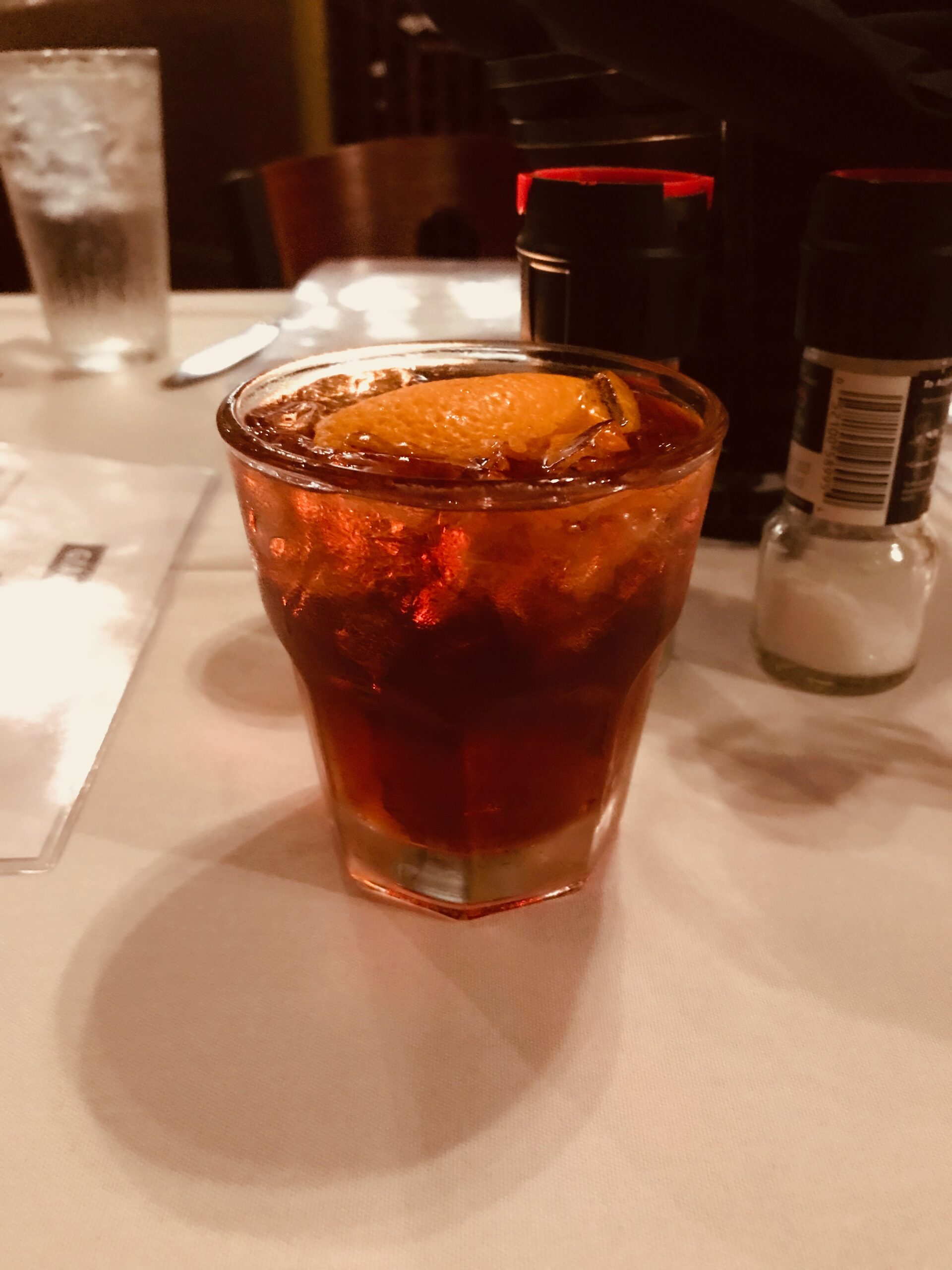
A “Corn ‘n Oil” was worth a try, but not my favorite.
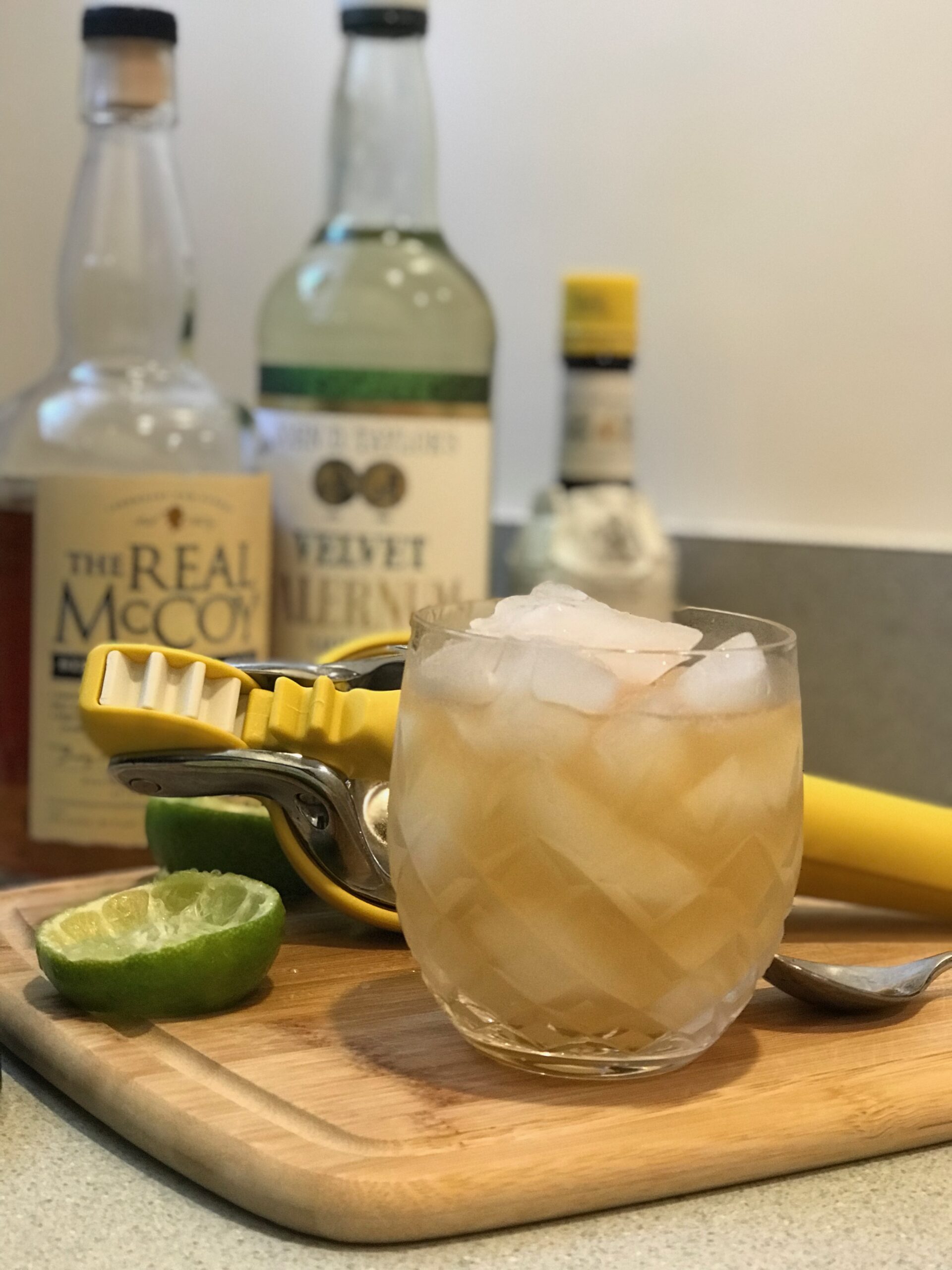

Music
An updated “White Collar Wire” playlist on Spotify, including new additions by Adia Victoria, Larkin Poe, Mozart, Jack White, Coheed and Cambria, Sam Burchfield, Yo Gotti, The Anaonymous, Lightnin’ Hopkins, and Alexandre Desplat:


